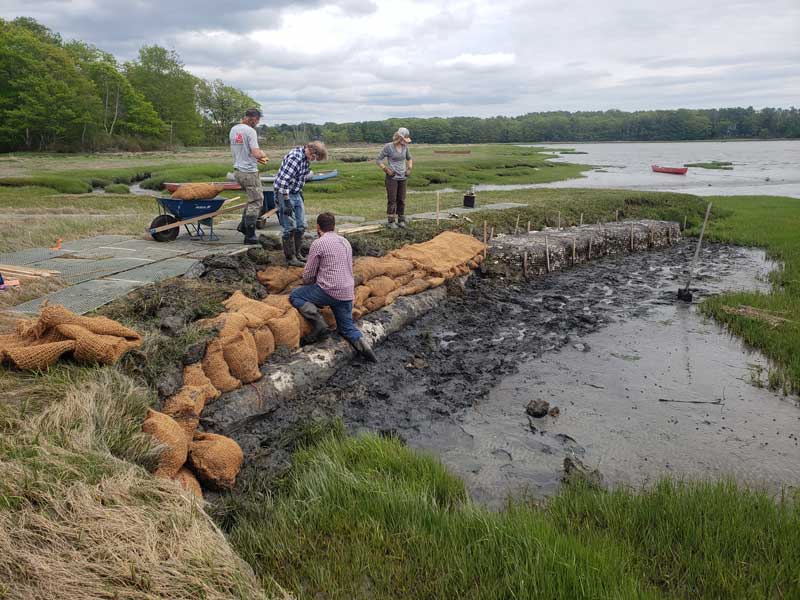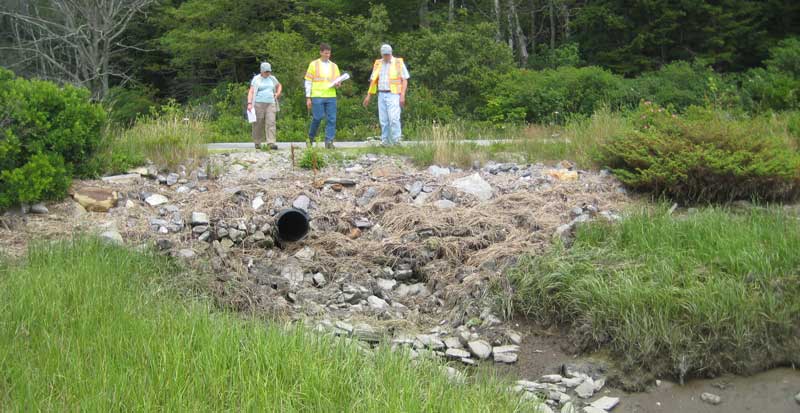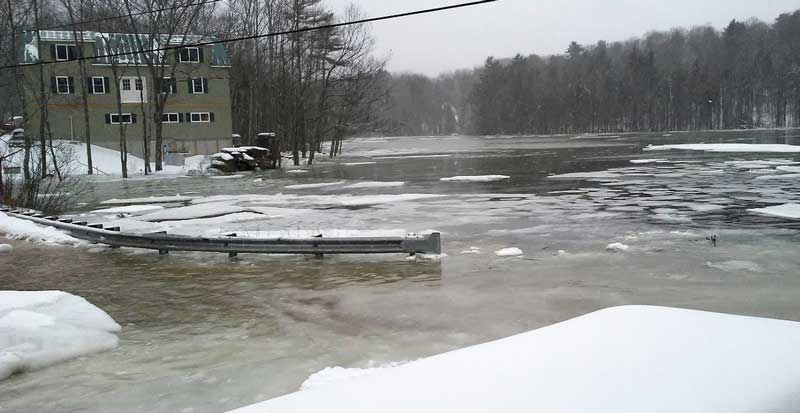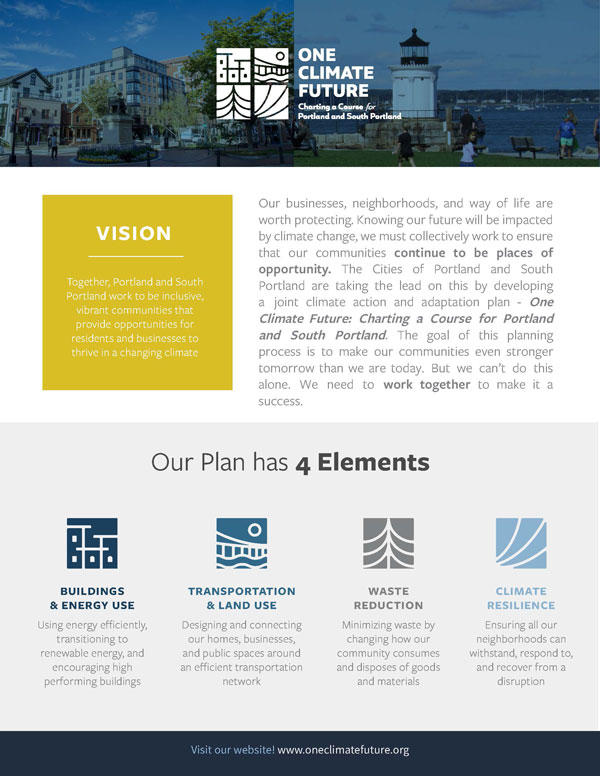Municipal and Community Leaders
Take Action Toward Climate Resilience
Many Paths to Community Resilience and Adaptation in Casco Bay
WHY IT MATTERS
Maine’s warming climate brings increased intensity, frequency, and variability to precipitation events, snowmelt, coastal flooding, and sea level rise. These climate-related events are already threatening Casco Bay’s coastal ecosystems, community infrastructure, social fabric, and marine and tourism economy. Casco Bay coastal communities are diverse but share a common goal of protecting our natural resources to remain socially, economically, and environmentally resilient. There are many different metrics to assess resilience and steps communities can take to adapt to a changing climate, such as strengthening land use ordinances. All communities need increased and ongoing coordinated support and technical assistance to adapt to our changing climate.
STATUS & TRENDS
8+
Communities have completed climate change vulnerability assessments
11
Communities have consistent comprehensive plans; only a few integrate climate resilience planning12
Communities are covered by their region’s Hazard Mitigation Plan2-3
Communities are in the process of developing adaptation plans and vulnerability assessmentsFlood Insurance Policies and
Community Rating System Participation
| Community | Number of Flood Insurance Policies | CRS Class |
|---|---|---|
| Brunswick | 49 | NP |
| Cape Elizabeth | 64 | 8 |
| Chebeague Island | 1 | NP |
| Cumberland | 32 | NP |
| Falmouth | 35 | NP |
| Freeport | 26 | NP |
| Harpswell | 146 | NP |
| Long Island | 6 | NP |
| Phippsburg | 48 | NP |
| Portland | 240 | 8 |
| South Portland | 125 | NP |
| West Bath | 8 | NP |
| Yarmouth | 63 | NP |
Source: FEMA NFIP Insurance Report; Maine Emergency Management Agency
Community Actions
The cities of Portland and South Portland adopted a joint climate action and adaptation plan called One Climate Future. This model of regional collaboration is one that other communities could adopt.

The Town of Harpswell has been planning for the impacts of sea level rise and coastal flooding events on both public and private roads (above). A local climate resilience task force completed a climate resilience vulnerability assessment in 2020 and is actively seeking funding to implement adaptation projects and engage the community. Below: Wallace Shore Road in Harpswell overtopping during a nor’easter in January 2018.

Successes and challenges
- Lack of municipal resources and capacity, competing community and political priorities, and little regional coordination pose challenges, particularly for small municipalities.
- Community awareness and support, increased education and assistance from state agencies and nonprofits, and the presence of community champions all greatly increase the likelihood of implementing programs and policies.
- Continuing to share information, success stories, and existing resources between communities and partners will help improve community planning for resilience.
- Underserved and vulnerable populations are often those most impacted by environmental pollution and climate change. Furthermore, there are often barriers to and inertia in engaging these residents.
- The Governor’s Office of Policy Innovation and the Future, in partnership with state agencies, is following up on the Maine Climate Council report with more and stronger state and regional programs that offer technical assistance and coordinated funding sources.
View a PDF version of this page that can be downloaded and printed.
View references, further reading, and a summary of methods and data sources.
STATE OF CASCO BAY
Drivers & Stressors
What’s Affecting the Bay?
Human Connections
What’s Being Done?
If you would like to receive a printed State of Casco Bay report, send an email request to cbep@maine.edu.
This document has been funded by the U.S. Environmental Protection Agency under Cooperative Agreements #CE00A00348-0 and #CE00A00662-0 with the University of Southern Maine.
Suggested citation: Casco Bay Estuary Partnership. State of Casco Bay, 6th Edition (2021).
